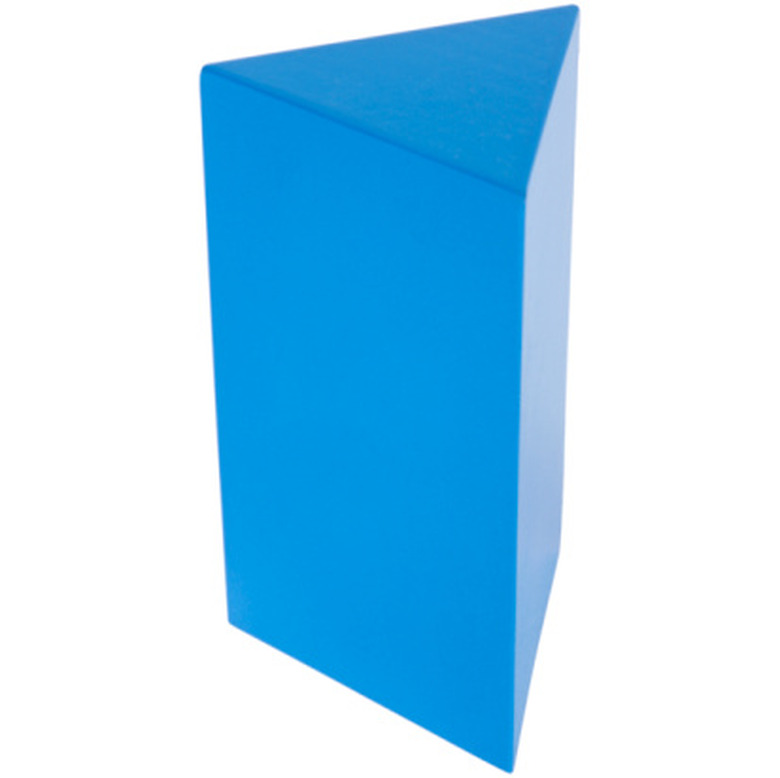How To Find The Height Of A Prism
The two bases of a prism may determine its shape, but the prism's height determines its size. Prisms are polyhedrons, three-dimensional solids with two identical and parallel polygonal bases or ends. The prism's height is the distance between its two bases and is an important measurement in the calculation of the prism's volume and surface area. By working backwards with the general formulas volume = base area * height and surface area = base's perimeter * height + 2 * base's area, you can find any prism's height.
Volume
Step 1
Measure the prism's base. For this example, the prism's base is square with a side measuring 10 inches.
Step 2
Find the base's area through the particular shape's area formula. In this example, the formula for the base's area is one side's measurement multiplied to itself, or 10 multiplied by 10, which equals 100 square inches.
Step 3
Divide the prism's volume by the base's area to find the prism's height. Concluding this example, let the prism's volume be 600 cubic inches. Dividing 600 cubic inches by 100 square inches results in a height of 6 inches.
Surface Area
Step 1
Measure the prism's base. For this example, let the base be a rectangle with a width of 4 inches and a length of 6 inches.
Step 2
Find the base's area with the given shape's area formula, then multiply the area by 2. In this example, the formula for the base's area is width multiplied by length, or 4 multiplied by 6, which equals 24 square inches, and 24 multiplied by 2 results in 48 square inches.
Step 3
Subtract the doubled base area from the prism's surface area. In this example, let the surface area be 248 square inches. Subtracting 48 from 248 results in 200 square inches.
Step 4
Calculate the base's perimeter with the shape's perimeter formula. In this example, the formula for the base's perimeter is 2 * width + 2 * length, or 2 * 4 + 2 * 6, which equals 20 inches.
Step 5
Divide the remaining amount of surface area from Step 3 by the base's perimeter to find the prism's height. Concluding this example, dividing 200 square inches by 20 inches results in a height of 10 inches.
TL;DR (Too Long; Didn't Read)
If the prism is a real object, measure the distance between its two bases with measuring tape to find its height.
Cite This Article
MLA
Gartneer, Chance E.. "How To Find The Height Of A Prism" sciencing.com, https://www.sciencing.com/height-prism-8539712/. 24 April 2017.
APA
Gartneer, Chance E.. (2017, April 24). How To Find The Height Of A Prism. sciencing.com. Retrieved from https://www.sciencing.com/height-prism-8539712/
Chicago
Gartneer, Chance E.. How To Find The Height Of A Prism last modified March 24, 2022. https://www.sciencing.com/height-prism-8539712/
